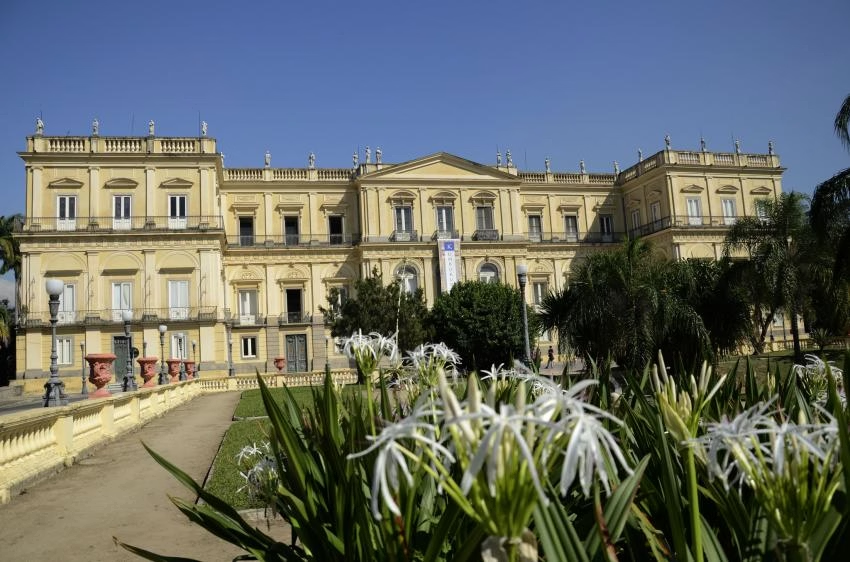Seven years after a devastating fire consumed its historic halls, Brazil’s National Museum in Rio de Janeiro is reopening to the public — offering visitors a powerful encounter with science, art, and national memory. Housed in the former royal palace of São Cristóvão, the institution now enters a new chapter with a partially restored building, an immersive new exhibit, and a growing collection of treasures.
The fire in 2018 destroyed much of the museum’s architecture and over 85% of its 20-million-piece collection. Investigations later concluded it was caused by a short circuit in an air conditioning unit. Since then, a massive reconstruction effort — backed by nearly R$517 million in funding from public and private partnerships — has been underway to bring the iconic institution back to life.
Now open for a limited-time preview, the museum is hosting a free exhibition called Entre Gigantes (“Among Giants”), available until August 31. The exhibition spans three immersive rooms and blends science, heritage, and contemporary Indigenous art. Visits are free of charge but must be booked in advance via Sympla.

A Whale, a Meteorite, and a New Perspective
Upon entering the palace, visitors are welcomed by one of the most symbolic survivors of the fire: the Bendegó meteorite. Weighing 5.6 tons, this massive iron rock was discovered in Bahia in 1784 and has become a symbol of the museum’s resilience. Today, it is presented alongside a series of artworks by Indigenous artist Gustavo Caboco and his Wapichana family, reimagining the meteorite’s meaning through a contemporary lens.
The centerpiece of the exhibition is nothing short of breathtaking — a 15.7-meter (51.5-foot) sperm whale skeleton suspended under a newly installed glass skylight. It’s the largest specimen of its kind on display in South America and was painstakingly restored and assembled over two months. Visitors are even invited to suggest names for the whale as part of an interactive campaign.
A third gallery is dedicated to the museum’s recovery journey. Here, guests can view restored Carrara marble sculptures, architectural elements from the original palace, and a visual chronicle of the reconstruction process.

Rebuilding a Collection from the Ground Up
In parallel to the architectural restoration, the museum has been rebuilding its collection through the Recompõe initiative. Since 2021, more than 14,000 items have been donated by institutions, collectors, and families in Brazil and abroad.
New highlights include:
- A rare 16th-century Tupinambá feather mantle, returned from the National Museum of Denmark;
- Over 1,100 fossil specimens from the Araripe Basin, donated by collector Burkhard Pohl;
- African artifacts from the collection of ambassador Alexandre Addor;
- Pre-Columbian ceramics from Gilka Leite Garcia;
- A taxidermy tiger, donated by a private family;
- A shell collection donated by Brazilian musician Nando Reis.
Among the most meaningful recovered items are fragments of Luzia’s skull — the oldest human fossil ever found in the Americas — which miraculously survived the fire and were rescued from the rubble.

A Historic Site Worth the Visit
Founded in 1818 and located in the leafy Quinta da Boa Vista park, the National Museum is more than a collection — it’s a living part of Brazilian identity. The palace once served as a residence for the Portuguese royal family and later as the seat of the Brazilian Empire, making it a site of deep historical significance.
Although full reconstruction is expected to be completed by 2027, this partial reopening offers a rare opportunity for travelers to step inside one of Latin America’s most important scientific and cultural institutions — and witness its rebirth in real time.
🎟 Free admission until August 31. Reservations required via Sympla.



